ფოლკლორის არქივში დაცული ფონო ჩანაწერების ხელმისაწვდომობის უზრუნველყოფა Accessibility of the Audio Materials Kept in the Folklore Archive
დიგიტალიზაციისა და ელექტრონული სისტემატიზაციის გზით
by Means of Digitalization and Electronic Systematization
საველე ფონოჩანაწერის ფრაგმენტი,
პროფ. გიზო ჭელიძის ხმა
Fragment of the field audio recording
of professor Gizo Chelidze
* * *
მთქმელებთან მუშაობის პროცესი 1950-იანი წლების საქართველოში.
Photos depict the process of fieldwork about the 50s of the last century in Georgia
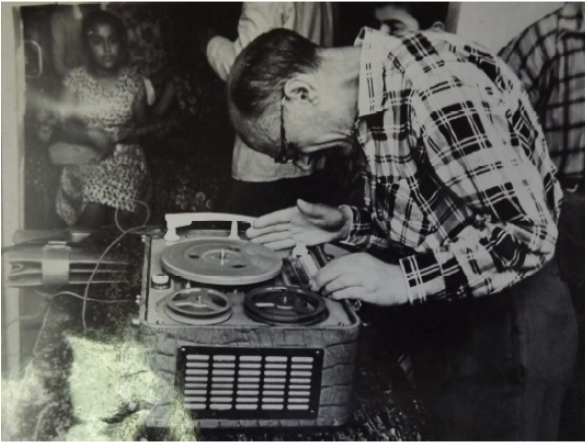
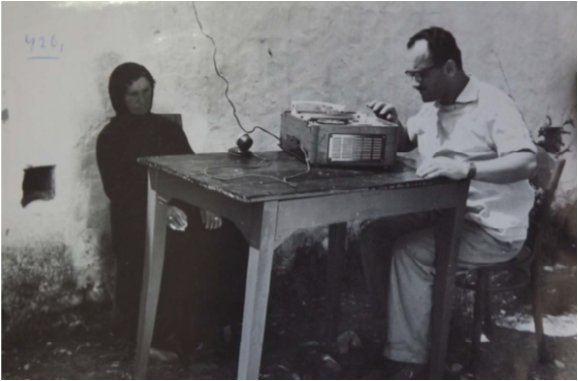
პროექტზე მუშაობის პროცესი
Working on a project
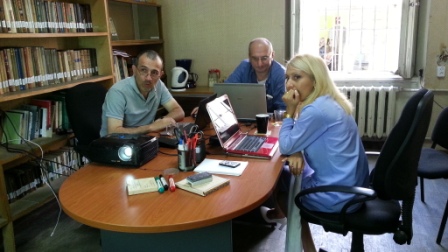
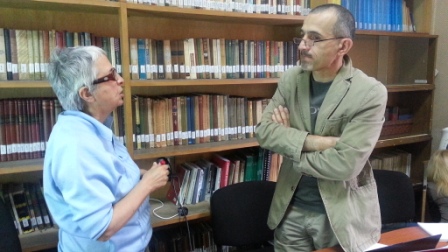
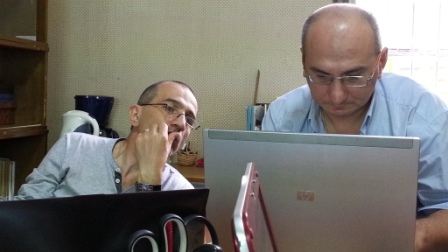
საველე შემკრებლობით პრაქტიკაში ახალი მედია საშუალებების გამოყენებამ გასული საუკუნის 50–იანი წლებიდან სიტყვიერი ფოლკლორის მკვლევარებს უბიძგა მნიშვნელოვანი ცვლილებები შეეტანათ მასალის ფიქსირების არსებულ მეთოდში. გარდატეხის ეტაპად უნდა ჩაითვალოს 1956 წელი, როცა საქართველოს მეცნიერებათა აკდემიის პრეზიდიუმის მიერ ორგანიზებულ სამეცნიერო რესპუბლიკურ თათბირზე, მიღებული იქნა რეკომენდაცია ლიტერატურის ინსტიტუტის ფოლკლორის განყოფილებასა და არქივს მეტი ყურადღება დაეთმო აუდიო ჩანაწერების შეგროვებისათვის. რეკომენდაცია მთელი სერიოზულობით იქნა გათვალისწინებული ქართულ ფოლკლორისტიკაში და ლიტერატურის ინსტიტუტის ფოლკლორის არქივი ამ პერიოდიდან იწყებს მნიშვნელოვან ტექნიკურ გადაიარაღებას. სწორედ აღნიშნული დროიდან იწყება ფონოჩანაწერების თავმოყრა ქართული ფოლკლორის არქივში.
როგორც ირკვევა, მუშაობის ძველ მეთოდზე მორგებული ქართველ ფოლკლორისტთა სკოლა ადვილად ვერ შეეგუა ახალ მეთოდს.საფიქრებელია, რომ სიტყვიერი ფოლკლორის მკვლევარებისათვის მაინცადამაინც ინფორმაციული არ აღმოჩნდა ამ სახით ჩაწერილი მასალა. ისიც გასათვალისწინებელია, რომ მაშინდელი ტექნიკა ვერ უზრუნველყოფდა კომფორტული სამუშაო გარემოს შექმნას, როგორ ჩაწერის, ისე მასალის დამუშავების პროცესში და აუდიო ჩანაწერებზე თავისუფალ წვდომას. აქედან გამომდინარე, მივიღეთ შედეგი, რომელიც პირველადი დაკვირვების საფუძველზე შეიძლება შემდეგნაირად რეზიუმირდეს:
1. საშურ საქმედ ითვლებოდა ტექსტების ფიქსაცია, რაც ზრდიდა შეგროვილი მასალის მოცულობას,
2. მასალის დამუშავება აღიქმებოდა მეორე რიგის ამოცანად, რაც ასევე ზრდიდა სისტემატიზაციის გარეშე დარჩენილი ელექტრო–მაგნიტური მატარებლების რაოდენობას. ამის ნათელ დადასტურებად უნდა ჩაითვალოს ის მნიშვნელოვანი უთანაბრობა, რაც ერთი მხრივ, საარქივო აუდიო მასალის რაოდენობრივი მახასიათებლისა (ქრონომეტრაჟი) და მეორე მხრივ, ფონოგრამების საინვენტარო დავთარში სიტემატიზირებული მონაცემების შედარებისას იკვეთება.
პროექტით გათვალისწინებული აუდიო ჩანაწერების ციფრული დამუშავება და ამ გზით მათი სრული ხელმისაწვდომობის უზრუნველყოფა საშუალებას გვაძლევს შევავსოთ მნიშვნელოვანი თეთრი ლაქა მუსიკალური და სიტყვიერი ფოლკლორის შემკრებლობით პრაქტიკაში.
პროექტის ფარგლებში შექმნილი ქსელური პროგრამა შესაძლებელია გამოყენებულ იქნას ასევე სხვა ხმოვანი ფოლკლორული ნიმუშების დასამუშავებლად და მათ შესახებ მონაცემების ბაზაში შესატანად.
აღნიშნული კოლექციის ხელნაწერთა შიფრის საერთო პრეფიქსია PHN.
* * *
The Folklore Departm ent and the Archive of the Institute considered to be their m ain priority the fixation of verbal part of the folklore materials in written form while everybody agreed on significance of the inseparability of melody and text of folklore patterns. As a rule fixation of the performance act of folklore materials was allocated to ethnomusicologists.In the 50s of the last century the scientific field was implem ented with new media equipments that stimulated the Georgian folklorists to make significant changes in the existing method of fixation of folklore texts. The major change was made in 1956 when the Presidium of the Georgian Academy of Sciences gave the recomm endation to the Folklore Department and the Folklore Archive of the Institute to draw much attention to audio collection of the folklore narratives. Before the recommendation in the mass media was published an article of the Georgian scientists dedicated to above mentioned problem . As the general analysis of the economic-financial documentation show the topic was seriously taken into account by the Georgian folklorists.
From the appendices it is evident that since that period the Folklore Archive of the Institute has began an im portant technical reequipping and has started collecting of the folklore materials using the method of audio recording. From the beginning the folklorists accustomed to the old method could not adapt to the new one. The materials recorded in this way were not informational for them . It must be also taken into account that in those days the audio equipment did not provided comfortable working environment – implying the process of audio recording, working on the materials and obtaining audio records. Hence the result which we have can be resum ed as following:
1. Fixation of the texts was essential that increased the volume of the collected material;
2. Working on the material was considered to be a task of the second range which also increased the number of the electromagnetic-tapes left out of the systematization. This unevenness is revealed during the comparison of the data of the audio material (duration-length) and of the data registered in the inventory list. Digitalization of the audio recordings and their future accessibility will fill the gap existing in verbal and musical folklore fieldwork practice.
Electronic product in the frame of the project as the electronic platform of the comparative analysis of the folk prose is an integrated electronic system which will be the next important step in the accessibility of the folklore materials with the help of the electronic systematization. Common Pprefix of the code of the given collection begins with PHN.